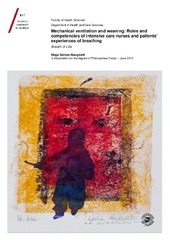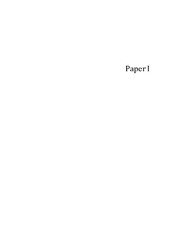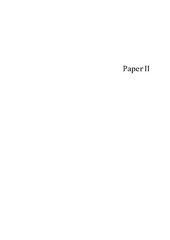| dc.contributor.advisor | Storli, Sissel Lisa | |
| dc.contributor.author | Haugdahl, Hege Selnes | |
| dc.date.accessioned | 2017-02-14T08:27:17Z | |
| dc.date.available | 2017-02-14T08:27:17Z | |
| dc.date.issued | 2016-10-21 | |
| dc.description.abstract | Breathlessness is an under-recognized problem in intensive care. The overall aims of this study were to explore the roles and competencies of nurses in mechanical ventilation (MV) and weaning, and to explore patients’ experiences of breathing during and after mechanical ventilation.
A multimethod design included: survey data from leaders in Norwegian ICUs, interviews and field observations of intensive care nurses in concrete weaning situations, a prospective observational study of 100 mechanically ventilated patients’ self report of breathlessness and, a qualitatively driven sequential mixed method design combining prospective observational breathlessness data during MV and data from follow-up interviews.
We found that breathlessness was prevalent among mechanically ventilated patients (62%), and underestimated by nurses and physicians, regardless of expertise or experiences.
MV patients’ experiences of breathing were not necessarily a separate experience, but intertwined with the whole illness experience and existential dimensions of life. The nurses’ roles in MV and weaning are their continuous presence and vigilance detection of early changes in the patients’ condition. To acknowledge the presence and impact of breathlessness seems important. Knowing the patient and facilitating well-being was a crucial part of competence in weaning and opened up for establishing trust and confidence, which were necessary to reach into the patients’ world and “pull” the patient back to life, to the “here and now”. This “pulling” was connected to “pushing” the patient further in the weaning process. A potential link between breathlessness and post-intensive care syndrome is an argument for patients’ own reports of breathing to form part of nursing interventions and follow up supporting the patients’ quest for meaning. To enhance the quality of care in MV and weaning, intensive care nurses have an important role in the interprofessional team in order to discuss, reflect and learn how to assess and respond to patients’ experiences of breathing. | en_US |
| dc.description.doctoraltype | ph.d. | en_US |
| dc.description.popularabstract | Ved hjelp av et enkelt måleverktøy ba vi respiratorpasienter angi på en skala fra 0-10 om han/hun følte seg tungpusten. Undersøkelsen ble gjort 30 minutter etter gjennomført pusteprøve. Ved samme måletidspunkt vurderte også sykepleier og lege pasienten for å sammenligne skåringene. Resultatene viste at 62% av pasientene følte seg tungpusten, og at leger og sykepleiere underestimerte pasientens egne vurderinger. På en skal fra 0-10, hadde pasientene en gjennomsnittlig skåre på 5, mens leger og sykepleier skåret 2.
Dybdeintervju etter utskrivelse viste at flere pasienter som rapporterte tungpustenhet, ikke husket det i ettertid. Men pusteerfaringen var sammenvevd med hele sykdomsopplevelsen, og ble beskrevet ved fire tema: eksistensiell trussel, en kropp uten grenser, det som var så tungt, og å komme seg igjennom. Pasientene opplevde å være i et slags mellomrom, mellom liv og død, mellom person og maskin, og hvor de følte de måtte velge en retning.
Ved å studere intensivsykepleiere i konkret arbeid med respiratorpasienter fant vi at kompetanse inkluderte inngående kunnskap om pustefysiologi og håndtering av respiratoren. Oppmerksomhet og evne til å fortolke pasientens kroppsspråk var fundamentalt for å gjøre kliniske vurderinger og å støtte pasientens vilje til å komme seg igjennom sykdomsfasen.
Pustebesvær og følelsen av ikke å ha kontroll er en viktig risikofaktor for å utvikle senskader, blant annet posttraumatisk stress. Intensivsykepleiere bør derfor rutinemessig måle respiratorpasienters følelse av tungpustenhet. | en_US |
| dc.description.sponsorship | Norsk sykepleierforbund | en_US |
| dc.description | The papers III and IV of this thesis are not available in Munin. <br>
Paper III: Haugdahl, H. S., Storli, S. L., Meland, B., Dybwik, K., Romild, U., Klepstad, P.:
“Underestimation of Patient Breathlessness by Nurses and Physicians During a
Spontaneous Breathing Trial”. Available in <a href=http://dx.doi.org/10.1164/rccm.201503-0419OC> American Journal of Respiratory and Critical Care Medicine 2015, 192(12):1440-1448. </a>
<br>
Paper IV: Haugdahl, H. S., Dahlberg, H., Klepstad, P., Storli, S. L.: “The Breath of Life. Patients’Experiences of Breathing During and After Mechanical Ventilation”. (Manuscript). | en_US |
| dc.identifier.uri | https://hdl.handle.net/10037/10290 | |
| dc.language.iso | eng | en_US |
| dc.publisher | UiT The Arctic University of Norway | en_US |
| dc.publisher | UiT Norges arktiske universitet | en_US |
| dc.rights.accessRights | openAccess | en_US |
| dc.rights.holder | Copyright 2016 The Author(s) | |
| dc.rights.uri | https://creativecommons.org/licenses/by-nc-sa/3.0 | en_US |
| dc.rights | Attribution-NonCommercial-ShareAlike 3.0 Unported (CC BY-NC-SA 3.0) | en_US |
| dc.subject | VDP::Medisinske Fag: 700::Helsefag: 800::Sykepleievitenskap: 808 | en_US |
| dc.subject | VDP::Medical disciplines: 700::Health sciences: 800::Nursing science: 808 | en_US |
| dc.title | Mechanical ventilation and weaning: Roles and competencies of intensive care nurses and patients' experiences of breathing. | en_US |
| dc.type | Doctoral thesis | en_US |
| dc.type | Doktorgradsavhandling | en_US |


 English
English norsk
norsk


